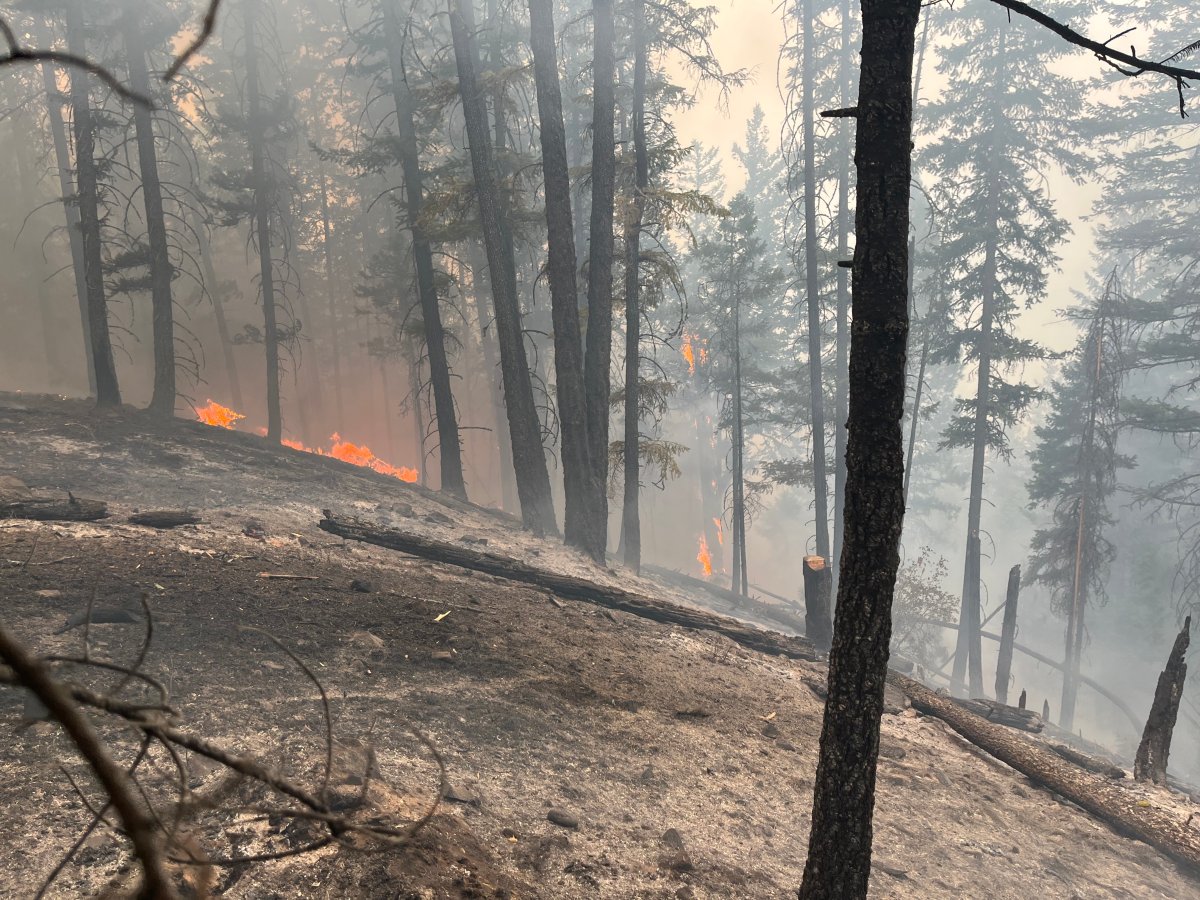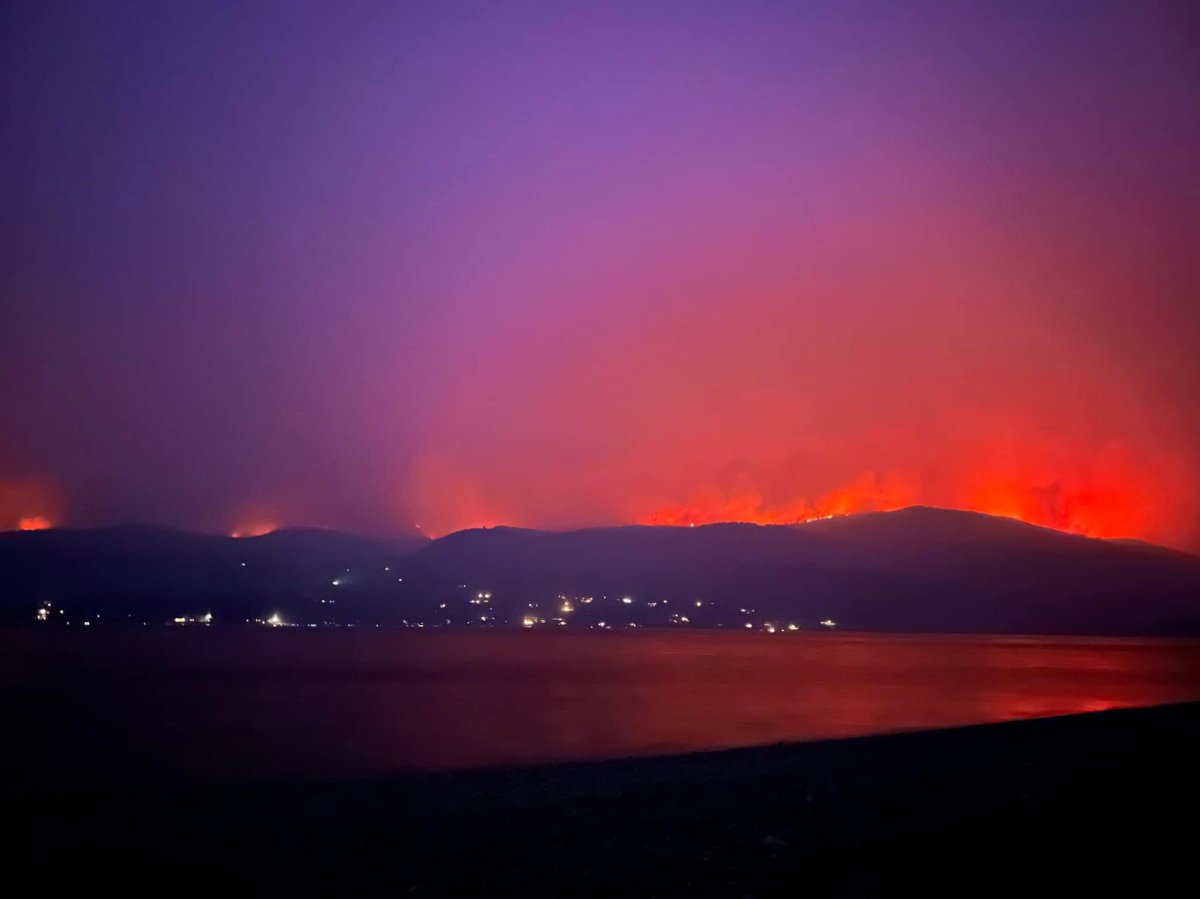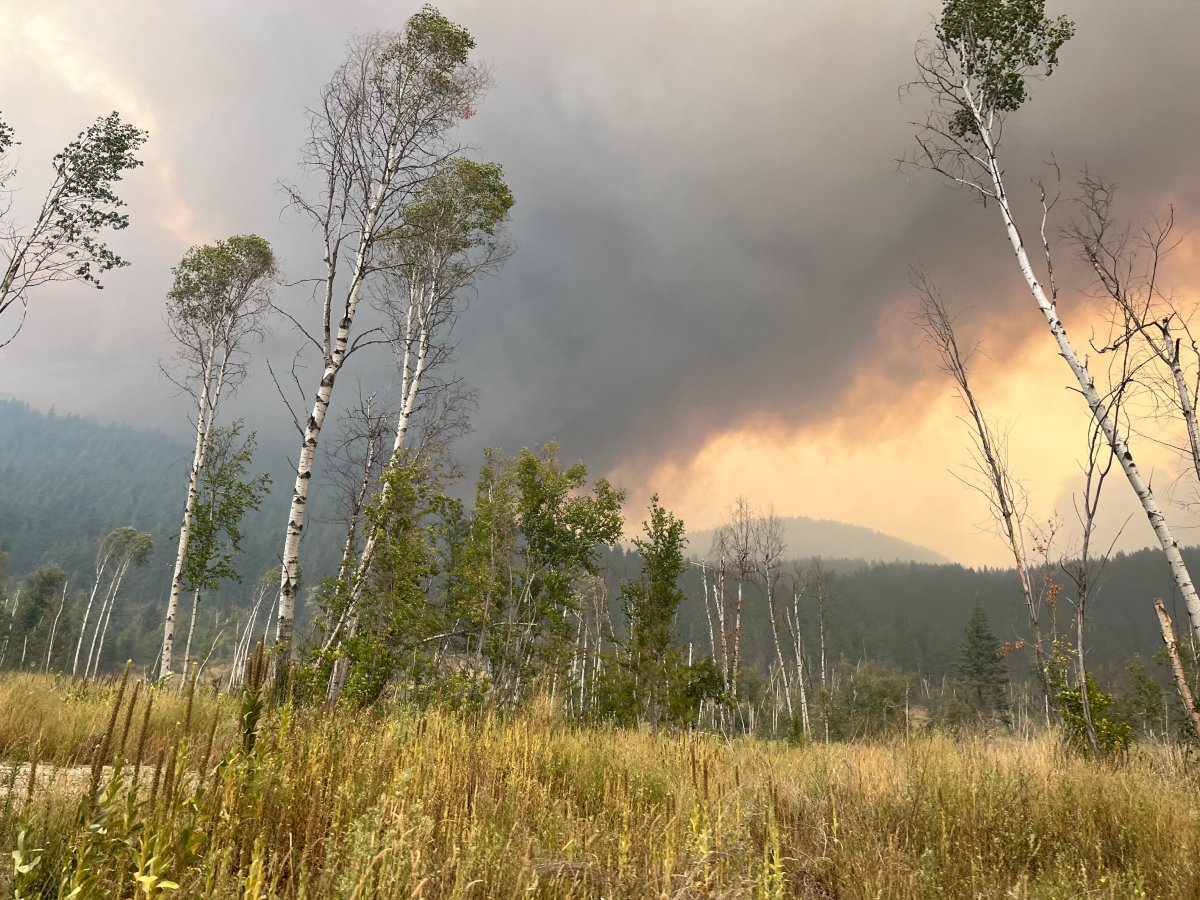Many people who returned to see their homes on the north shore of Shuswap Lake this week saw only piles of debris.

More than 10,000 residents were forced to evacuate their Shuswap-area properties due to the Bush Creek East wildfire, which tore through the region on Aug. 18, destroying an estimated 176 homes.
The Columbia-Shuswap Regional District rescinded most evacuation orders in the area on Wednesday, allowing residents to return to their properties but around 200 wildland firefighters and support staff are still assigned to the fire and are monitoring anything that’s still burning in the Shuswap area.
“Crews are still working towards containment with heavy equipment to continue to work there through the weekend,” said Bryce Moreira, deputy incident commander with the B.C. Wildfire Service in an update on Friday.
Despite the evacuation orders, some residents stayed behind to protect their homes.
“It was a community effort. Everybody pitched in and we managed to save a number of structures due to our efforts here,” said Jay Simpson, area director with the Columbia Shuswap Regional District.
Simpson said about 50 people from the community recently received basic fire suppression and safety (S-100) training.
He wants community members to be able to get training annually.
“There’s not enough resources with B.C. Wildfires – not enough personnel and they need to have communities step up to a certain extent within safety limits to help them out,” Simpson said.
Jayson Warkentin is one of the Lee Creek residents who stayed behind to save his neighbours’ homes. His mother’s home was destroyed by fire.
Warkentin said he understands the challenges faced by the province dealing with so many fires, but that the skills and the willingness of the residents need to be utilized.
He’s calling for more organization outside of fire season and a more community-based approach
“Unfortunately when the fire gets this big, the potential for the official firefighters to handle these incidents is not sufficient so we are going to have to fill in the gaps,” said Warkentin who is also a forester with years of experience fighting fires.
“There’s certainly some basic training and safety considerations that should be discussed and organizing abilities but we can be efficient. Fire fighting is all about resources and we want to be organized and have protocols in place and ensure there is training to watch out for safety concerns,” Warkentin said.
Warkentin said he’s confident in the abilities of the people in his area.
“I think we as rural communities are actually very capable of that with a minimal amount of effort just because of the general experience that people have. In my neighborhood, you hear people running power saws all the time. People have heavy-duty trucks. People have water trucks and people have excavators in my neighbourhood so there’s a lot of equipment and skills and experience within the neighborhood,” Warkentin said.
Warkentin said residents of Lee Creek and Scotch Creek immediately left the area when the fire first started but as soon as things calmed down those who were determined to save structures returned.
Simpson estimates around 300 people stayed behind.
“It’s easy to say just rely on insurance or life and safety first but that’s based on the notion that you can’t fight fire,” Warkentin said.
“There are some circumstances where that’s true, like when it’s moving at 70 km an hour and you have a huge fire and you need to get out of the way. We all went to the lake and we went on boats to a safe zone and when the conditions calmed down we were back in there because we knew that the threat to our homes was not over. Some homes got caught up in the immediate firestorm and there’s nothing you can do about that.”
He said the most painful part of the whole experience was how alone the community members felt when the fire started.
“There was so much awesome community building going on but knowing that there’s so many resources and equipment that’s not really being put to good use in my opinion at that time it just took them quite a while. I understand the challenges of that, but we felt fairly alone in battling those fires by ourselves,” Warkentin said
The director of the emergency operations centre for the Columbia Shuswap Regional District says there are discussions with B.C. Wildfire Service on training people who may want to stay to defend properties during a wildfire event.
“The situation in the north Shuswap has opened up all those questions and those discussions are being had and I think there’s an opportunity for change here,” said Derek Sutherland, director of the emergency operations centre for the Columbia Shuswap Regional District, at a community briefing.
“Long-term, the discussions that we’ve been having with B.C. Wildfire and this is really broad strokes high-level, is how do we involve the local fire departments and train people who may want to stay and defend during a wildfire event so that they are already trained and they can be conscripted by B.C. Wildfire for lack of a better term and brought into the system, get a pay cheque and work together to address the situations,” Sutherland said.






Comments